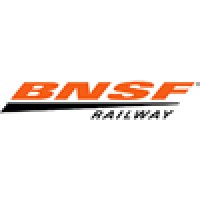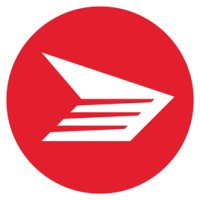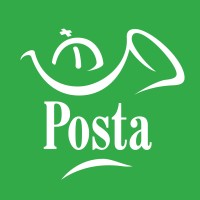
BNSF Railway Company Cyber Security Posture
bnsf.comBNSF Railway operates one of the largest railroad networks in North America, with about 32,500 route miles in 28 states and three Canadian provinces. The railway is among the world's top transporters of intermodal traffic, serves more grain-producing regions than any other railroad, and transports the components of many of the products we depend on daily. BNSF Railway is an Equal Opportunity Employer Minorities/Women/Veterans/Disabled. On Feb. 12, 2010, Burlington Northern Santa Fe Corporation was acquired by Berkshire Hathaway Inc. (NYSE: BRK)
BNSF Railway Company Details
bnsf-railway
18143 employees
181934.0
492
Freight and Package Transportation
bnsf.com
Scan still pending
BNS_8235751
In-progress
Between 900 and 1000
This score is AI-generated and less favored by cyber insurers, who prefer the TPRM score.
 BNSF Railway Global Score
BNSF Railway Global Score.png)

BNSF Railway Company Scoring based on AI Models
| Model Name | Date | Description | Current Score Difference | Score |
|---|---|---|---|---|
| AVERAGE-Industry | 03-12-2025 | This score represents the average cybersecurity rating of companies already scanned within the same industry. It provides a benchmark to compare an individual company's security posture against its industry peers. | N/A | Between 900 and 1000 |
BNSF Railway Company Cyber Security News & History
| Entity | Type | Severity | Impact | Seen | Url ID | Details | View |
|---|
BNSF Railway Company Subsidiaries

BNSF Railway operates one of the largest railroad networks in North America, with about 32,500 route miles in 28 states and three Canadian provinces. The railway is among the world's top transporters of intermodal traffic, serves more grain-producing regions than any other railroad, and transports the components of many of the products we depend on daily. BNSF Railway is an Equal Opportunity Employer Minorities/Women/Veterans/Disabled. On Feb. 12, 2010, Burlington Northern Santa Fe Corporation was acquired by Berkshire Hathaway Inc. (NYSE: BRK)
Access Data Using Our API

Get company history
.png)
BNSF Railway Cyber Security News
Cyberthreats to railroads loom as industry and TSA grow an uneasy partnership
U.S. railroad companies and the federal government are working to build trust after a rollout of cybersecurity regulations in 2022 rankled ...
One year in, TSA's cybersecurity directive lays groundwork for railroad sector amid rising digital threats
The TSA directive aimed at strengthening the cybersecurity of surface transportation systems has undoubtedly caught the attention of ...
Rail News - Report: Transit industry unprepared for more cybersecurity threats. For Railroad Career Professionals
The transit industry is unprepared for increased cybersecurity threats and attacks, according to a new report released by the Mineta ...
TSA announces proposed rule that would require the establishment of pipeline and railroad cyber risk management programs
The Transportation Security Administration (TSA) published a Notice of Proposed Rulemaking that proposes to mandate cyber risk management and reporting ...
TSA issues proposed cyber mandates for pipelines, rail, airlines
The post-Colonial Pipeline proposal requires the agency's charges to follow one cyber mandate to rule them all. By Christian Vasquez.
TSA floats new rules mandating cyber incident reporting for pipelines, railroads
Under the rules, organizations would be required to report cyber incidents to the Cybersecurity and Infrastructure Security Agency. TSA said it ...
Cybersecurity in Rail
Siemens Mobility helped to align the IT and OT perspectives. Our rail cybersecurity services helped to assess the status quo of cyber security in the signaling ...
New TSA Rail Cybersecurity Rule Shows Trend Toward Prescriptive Mandates
the Transportation Security Administration issued a new security directive to enhance cybersecurity preparedness and resilience for ...
Rail Cybersecurity Is a Complex Environment
Rail remains one of the most popular modes of transportation. In a typical year, US freight railroads move around 1.6 billion tons across ...

BNSF Railway Similar Companies

Pos Malaysia Berhad
Pos Malaysia Berhad [199101019653 (229990-M)] is the national postal and parcel service provider and sole licensee for universal postal services in Malaysia. With a history of over 200 years, the company has diversified beyond the traditional provision of mail and parcel delivery to also offer retai

DHL Express Italy
Presente in oltre 220 Paesi nel mondo con proprie sedi e persone, la nostra azienda è in grado di unire alla capillarità del network la conoscenza approfondita dei mercati locali, delle procedure doganali e delle caratteristiche di trasporto e distribuzione specifiche dei diversi Paesi. Ogni gi

Canada Post / Postes Canada
As the country's postal service and leading ecommerce delivery company, we’re committed to serving Canadians and Canadian businesses, working for the greener good, and delivering a stronger Canada. We are the only delivery organization with the network and commitment to serve all of the more than 1

FedEx
FedEx connects people and possibilities through our worldwide portfolio of shipping, transportation, e-commerce and digital supply chain services. For decades, we’ve been innovating to deliver more for you. Strengthening supply chains with our global network. Simplifying logistics. Enhancing trackin

Magyar Posta
A Magyar Posta Zrt. több mint 150 éve Magyarország ismert és elismert nemzeti postai szolgáltatója. Magyarország egyik legnagyobb foglalkoztatójaként 21.000 munkavállaló segítéségével, több mint 2150 postájával és 450 mobilposta járatával behálózza az országot, egymással és

VNPost
Tên giao dịch: Tổng Công ty Bưu chính Việt Nam Tên viết tắt: Bưu chính Việt Nam Tên giao dịch quốc tế: Vietnam Post Tên viết tắt quốc tế: VNPost Với mạng lưới các điểm phục vụ rộng khắp, trải dài đến tận cấp xã trên cả nước và kinh nghiệm cung cấp các dịch vụ về Bưu chính chuyển phát, các d

Frequently Asked Questions
Explore insights on cybersecurity incidents, risk posture, and Rankiteo's assessments.
BNSF Railway CyberSecurity History Information
How many cyber incidents has BNSF Railway faced?
Total Incidents: According to Rankiteo, BNSF Railway has faced 0 incidents in the past.
What types of cybersecurity incidents have occurred at BNSF Railway?
Incident Types: The types of cybersecurity incidents that have occurred include .
Incident Details
What are the most common types of attacks the company has faced?
Additional Questions
What Do We Measure?
















Every week, Rankiteo analyzes billions of signals to give organizations a sharper, faster view of emerging risks. With deeper, more actionable intelligence at their fingertips, security teams can outpace threat actors, respond instantly to Zero-Day attacks, and dramatically shrink their risk exposure window.
These are some of the factors we use to calculate the overall score:
Identify exposed access points, detect misconfigured SSL certificates, and uncover vulnerabilities across the network infrastructure.
Gain visibility into the software components used within an organization to detect vulnerabilities, manage risk, and ensure supply chain security.
Monitor and manage all IT assets and their configurations to ensure accurate, real-time visibility across the company's technology environment.
Leverage real-time insights on active threats, malware campaigns, and emerging vulnerabilities to proactively defend against evolving cyberattacks.




